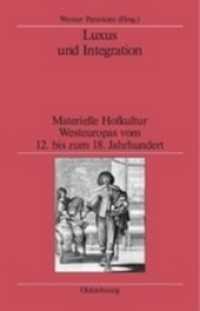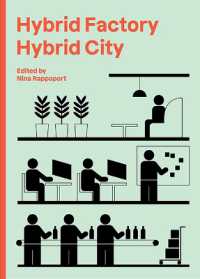- ホーム
- > 洋書
- > ドイツ書
- > Humanities, Arts & Music
- > History
- > antiquity
Description
(Text)
The Roman province of Moesia inferior (the actual northern Bulgaria and south-eastern Romania) was integrated gradually in the Roman Empire and the territory occupation was done in different ways both chronologically and spatially. The role of soldiers and veterans was decisive in the interaction between Roman colonists and local population, especially from the perspective of epigraphic habit. The natives were not only recruited in the Roman army, but they were partially or fully integrated in this complex structure.
The approach of the book is mainly epigraphical, but the archaeological issues are not excluded. The author tries to identify the origin of the people mentioned in the rural inscriptions and to establish the reasons of their presence in the country side of Moesia Inferior. After a brief survey on the historiography regarding the Roman rural structures, the author investigates the origin of the population in the rural milieu of the main cities or sites of Moesia inferior. The role of veterans as landowners, their political role in the rural life of the province, the local soldiers of rural origin enlisted in the Roman army, the landlord in the countryside of Moesia inferior are treated as well as the "mixed" names in the rural area of the province, providing the Roman-native interaction in onomastics. Finally, the analysis is dedicated to the role of the Roman colonization in the rural milieu of Moesia inferior in the complex Romanization process of this province.
(Text)
The Roman province of Moesia inferior (the actual northern Bulgaria and south-eastern Romania) was integrated gradually in the Roman Empire and the territory occupation was done in different ways both chronologically and spatially. The role of soldiers and veterans was decisive in the interaction between Roman colonists and local population, especially from the perspective of epigraphic habit. The natives were not only recruited in the Roman army, but they were partially or fully integrated in this complex structure.The approach of the book is mainly epigraphical, but the archaeological issues are not excluded. The author tries to identify the origin of the people mentioned in the rural inscriptions and to establish the reasons of their presence in the country side of Moesia Inferior. After a brief survey on the historiography regarding the Roman rural structures, the author investigates the origin of the population in the rural milieu of the main cities or sites of Moesia inferior. The role of veterans as landowners, their political role in the rural life of the province, the local soldiers of rural origin enlisted in the Roman army, the landlord in the countryside of Moesia inferior are treated as well as the "mixed" names in the rural area of the province, providing the Roman-native interaction in onomastics. Finally, the analysis is dedicated to the role of the Roman colonization in the rural milieu of Moesia inferior in the complex Romanization process of this province.







